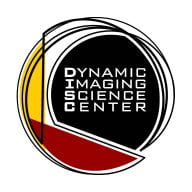
An overarching goal of this collaboration is to positively impact fetal screening and diagnosis of fetal abnormalities. This team aims to solve common limitations to cardiovascular MRI of the fetus, which include maternal anxiety in the scanner as well as fetal motion and cardiac gating. By identifying new ways low field MRI can improve diagnostic fetal and pediatric imaging, fetal MRI will be more accessible to expectant mothers and will offer a fast, comfortable method of secondary screening for fetal malformations.
Imaging of the developing heart is currently limited to ultrasound. Dr. Wood, a cardiovascular imaging expert, is motivated by the next generation of fetal heart MRI and is excited by the potential of low field systems to provide better imaging. According to Dr. Nayak, MRI is currently vastly underutilized in this space, despite the fact that it is completely safe, 3D, and can take pictures and movies of soft tissues. He believes the challenges in doing fetal MRI are surmountable, especially with the expertise and collaboration of the team. Sharing a similar sentiment, Dr. Ponrartana explains that while current clinical MRI is an extremely valuable modality for diagnostic imaging, there are inherent limitations that have the potential to be overcome by low field MRI. Dr. Detterich elaborates that if limitations in imaging the fetus can be addressed, improving all forms of cardiac MRI in children and adults with congenital heart disease are possible because the technical challenges have significant overlap. Furthermore, developing novel techniques such as real-time imaging and cardiac gated flow imaging open new avenues for fetal and pediatric cardiac MRI and will provide answers to questions that have been unanswerable to this point.
Success by this team will undoubtedly be credited to technical and clinical expertise combined with a generous and collaborative spirit amongst the team. According to Dr. Cui, “Not only do team members offer excellent insights, but they also have an amazing openness to questions and new ideas. I am especially impressed by the culture of cross-disciplinary thinking here.”
The energy level when doing experiments is also valued by team members. Dr. Nayak shares, “We have scanned several expectant mothers and the MRI control room is an exciting place to be.” Dr. Wood likens being in the MRI control room to “how people felt in Mission Control during the space era.”
Team Members
Krishna Nayak, PhD
Professor of Electrical and Computer Engineering, Biomedical Engineering, and Radiology
Dr. Nayak is an expert in how MRI hardware and software work together to make pictures and videos of the human body. He is an expert at MRI of moving things. And the fetus is moving… a lot!
John Wood, MD, PhD
Professor of Pediatrics and Radiology, Keck School of Medicine of USC
Dr. Wood is a practicing pediatric cardiologist and directs the heart MRI imaging of children. He especially understands the clinical importance of our technologies. Dr. Wood also holds a PhD in Bioengineering and is motivated by the technical frontiers afforded by the new 0.55 Tesla MRI instrument.
Skorn Ponrartana, MD
Clinical Associate Professor of Radiology, Keck School of Medicine of USC
Dr. Ponrartana is a radiologist with clinical expertise in fetal and pediatric body MRI.
Jon Detterich, MD
Associate Professor of Clinical Pediatrics, Keck School of Medicine of USC
as MRI, therefore, is able to bridge knowledge gaps that exist between the two modalities. Dr. Detterich has an active research laboratory that studies hemorheology and its effects on blood flow in patients with sickle cell anemia and congenital heart disease. He believes this project will have applications that will potentially solve other problems that exist in imaging and physiology research.
Sophia Cui, PhD
Siemens MR Scientist
Dr. Cui is an onsite scientist and is part of the Siemens MR Research Collaboration Group. She works with research partners to brainstorm, design, and execute research projects with the goal of driving innovative and clinically relevant MR techniques from prototype to positive impact on patient lives. She also provides software and hardware technical know-how to DISC researchers to enable the success of collaborative projects.
